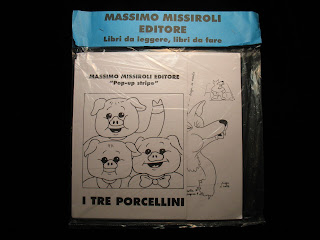


I have been working my way through a translation of Arabian Nights; getting lost in the tangle of ancient stories woven over a thousand and one nights. As a Western reader, I have found it difficult to appreciate this revered collection and its unfamiliar patterns of storytelling. I think that is why I have a certain love for this featured pop-up book, which singles out one of the more beloved stories from the intertwining tales.
In the early 1960’s, the British publishers Bancroft and Co. teamed up with the massive state-owned publishing house Artia, based out of Prague to create a series of colorful pop-up books based on the Arabian Nights. Two illustrators, Frantisek Sklar and Jaroslav Beza came together to create vibrant renditions of these classic tales, but little is known about the collaboration or these artists.
Today, we are looking at The Fisherman and the Demon printed in Czechoslovakia in 1960. This hardcover landscape format book has two large pop-ups with simple pull tabs that serve as the front and rear endpapers with a six page color booklet bound inside. The paper engineering is very simple box layers with expressive artwork in line with Kubasta, who was creating books with Artia at the time. There is no record of who did the pop-up design for this series, so we must assume that there was someone creating it in-house for Artia. I won’t go into much detail about the storyline, but I feel that buoyed by the wonderful art, this story stands up on its own. Now I have to keep my eye out for Sinbad, Aladdin and Ali Baba to complete my collection.
~Kyle





























